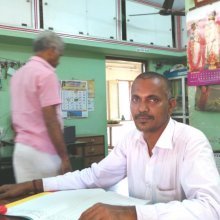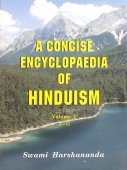Vijayadashami, Vijaya-dashami, Vijayadaśamī: 9 definitions
Introduction:
Vijayadashami means something in Hinduism, Sanskrit, the history of ancient India, Marathi. If you want to know the exact meaning, history, etymology or English translation of this term then check out the descriptions on this page. Add your comment or reference to a book if you want to contribute to this summary article.
The Sanskrit term Vijayadaśamī can be transliterated into English as Vijayadasami or Vijayadashami, using the IAST transliteration scheme (?).
Images (photo gallery)
In Hinduism
Purana and Itihasa (epic history)
Source: archive.org: Puranic EncyclopediaVijayadaśamī (विजयदशमी).—A festival of Indians. As this festival is celebrated for nine nights from the 1st to the 9th in the bright lunar fortnight of the month of Kanni (September-October) it is known as Navarātri (Nine nights) and as it continues up to Daśamī (the tenth night) it is called Dasra. The Hindus believe that the Vijayadaśamī (the victorious tenth) was the day on which Devī Durgā killed Mahiṣāsura and got victory. So this day is considered to be a suitable moment to begin the learning of all the arts which would enable one to carry on a successful life. Sarasvatī is considered the transfiguration of Durgā. As people became less superstitious, they began to consider the story of killing Mahiṣāsura as a metaphorical saying, to mean the killing of ignorance. So the day of victory of Devī Durgā (the same as Sarasvatī) is considered to be the auspicious moment for the beginning of learning. The warrior places his weapons, the man of literature his books and pen, the musician his musical instruments, at the feet of Devī and with devotion and worship receives them back from Devī on the Vijayadaśamī day at an auspicious moment.
This is a festival celebrated everywhere in India. In several native states this festival used to be celebrated under the sponsorship of the royal family as a State festival. As it is believed that Mahiṣāsura had lived in Mysore the celebration of Dasra in that State generally is on a grand scale. In Kerala, from olden times this festival was celebrated under the patronage of the Vañci Royal family.
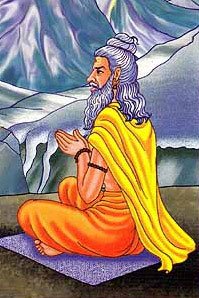
The Purana (पुराण, purāṇas) refers to Sanskrit literature preserving ancient India’s vast cultural history, including historical legends, religious ceremonies, various arts and sciences. The eighteen mahapuranas total over 400,000 shlokas (metrical couplets) and date to at least several centuries BCE.
Shaktism (Shakta philosophy)
Source: Brill: Śaivism and the Tantric Traditions (shaktism)Vijayadaśamī (विजयदशमी) refers to the “tenth lunar day”, as part of the Navarātra Tantric ritual (an autumnal festival of the warrior goddess Caṇḍikā).—Ceremonies include the appearance of a ten day structure spread out over the First lunar day (pratipat) to the Tenth lunar day (vijayadaśamī) in the bright phase of Āśvina.—Various 8th century sources refer to such rituals, for example: Devīpurāṇa, Kālikāpurāṇa, Kṛtyakalpataru, Durgābhaktitaraṅgiṇī, Durgāpūjātattva, Durgāpūjāviveka, Bhadrakālīmantravidhiprakaraṇa in Sanderson (2007); account of the Durgā Pūjā in Kelomal, West Bengal (Nicholas 2013).
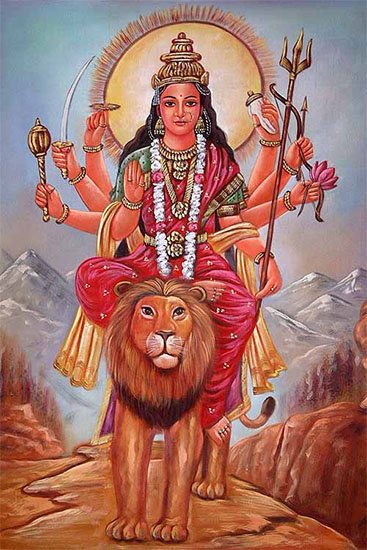
Shakta (शाक्त, śākta) or Shaktism (śāktism) represents a tradition of Hinduism where the Goddess (Devi) is revered and worshipped. Shakta literature includes a range of scriptures, including various Agamas and Tantras, although its roots may be traced back to the Vedas.
General definition (in Hinduism)
Source: WikiPedia: HinduismVijayadashami (विजयादशमी):A festival celebrated on the tenth day of the bright fortnight (Shukla Paksha) of the Hindu autumn month of Ashvin.
India history and geography
Source: Cologne Digital Sanskrit Dictionaries: Indian Epigraphical GlossaryVijayā-daśamī.—(EI 31), Āśvina-sudi 10. Note: vijayā-daśamī is defined in the “Indian epigraphical glossary” as it can be found on ancient inscriptions commonly written in Sanskrit, Prakrit or Dravidian languages.
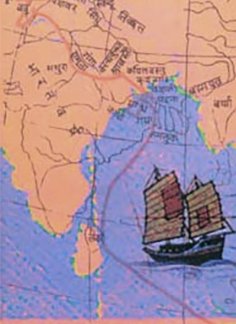
The history of India traces the identification of countries, villages, towns and other regions of India, as well as mythology, zoology, royal dynasties, rulers, tribes, local festivities and traditions and regional languages. Ancient India enjoyed religious freedom and encourages the path of Dharma, a concept common to Buddhism, Hinduism, and Jainism.
Languages of India and abroad
Marathi-English dictionary
Source: DDSA: The Molesworth Marathi and English Dictionaryvijayādaśamī (विजयादशमी).—f (S) The tenth of the light half of Ashwin, the anniversary of the victory of Ram over Rawan̤, the day of the Dasra &c. To kill the hēlā (male buffalo) on this day at sunset is the right of the chief Paṭil of a village.
Marathi is an Indo-European language having over 70 million native speakers people in (predominantly) Maharashtra India. Marathi, like many other Indo-Aryan languages, evolved from early forms of Prakrit, which itself is a subset of Sanskrit, one of the most ancient languages of the world.
Sanskrit dictionary
Source: DDSA: The practical Sanskrit-English dictionaryVijayādaśamī (विजयादशमी).—the tenth day of the bright half of Āśvina, observed as a great holiday and commonly known as Dasarā.
Vijayādaśamī is a Sanskrit compound consisting of the terms vijayā and daśamī (दशमी).
Source: Cologne Digital Sanskrit Dictionaries: Monier-Williams Sanskrit-English Dictionary1) Vijayadaśamī (विजयदशमी):—[=vi-jaya-daśamī] [from vi-jaya > vi-ji] f. the 10th day of the light half of the month Āśvina, the day of the Daśa-harā etc., [Monier-Williams’ Sanskrit-English Dictionary]
2) Vijayādaśamī (विजयादशमी):—[=vijayā-daśamī] [from vi-jaya > vi-ji] f. the 10th day of the light half of the month Āśvina, [Catalogue(s)]
[Sanskrit to German]
Sanskrit, also spelled संस्कृतम् (saṃskṛtam), is an ancient language of India commonly seen as the grandmother of the Indo-European language family (even English!). Closely allied with Prakrit and Pali, Sanskrit is more exhaustive in both grammar and terms and has the most extensive collection of literature in the world, greatly surpassing its sister-languages Greek and Latin.
Kannada-English dictionary
Source: Alar: Kannada-English corpusVijayadaśami (ವಿಜಯದಶಮಿ):—
1) [noun] the tenth day ofĀśvayuja, the seventh month in Hindu lunar calendar (considered as the most auspicious day).
2) [noun] a festival observed on that day.
Kannada is a Dravidian language (as opposed to the Indo-European language family) mainly spoken in the southwestern region of India.
See also (Relevant definitions)
Partial matches: Dashami, Vijaya, Tacami.
Starts with: Vijayadashaminirnaya, Vijayadashamipaddhati.
Full-text: Vijayadashaminirnaya, Vicayatacami, Navaratri, Mahanavaratra, Aippaci, Pratipat, Shami, Madhvacarya, Aparajita, Panthadurga.
Relevant text
Search found 10 books and stories containing Vijayadashami, Vijayā-daśamī, Vijaya-dasami, Vijaya-daśamī, Vijaya-daśami, Vijaya-dashami, Vijayādaśamī, Vijayadasami, Vijayadaśamī, Vijayadaśami; (plurals include: Vijayadashamis, daśamīs, dasamis, daśamis, dashamis, Vijayādaśamīs, Vijayadasamis, Vijayadaśamīs, Vijayadaśamis). You can also click to the full overview containing English textual excerpts. Below are direct links for the most relevant articles:
Temples of Munnur (Historical Study) (by R. Muthuraman)
Hanuman Nataka (critical study) (by Nurima Yeasmin)
The Vishnu Purana (by Horace Hayman Wilson)
Sanskrit sources of Kerala history (by Suma Parappattoli)
16. Ramavarmavijaya < [Chapter 5 - Sanskrit Dramas and Campus bearing on Kerala History]
8. The Visakhavijaya by Kerala Kalidasa < [Chapter 3 - Historical Details from Mahakavyas]
Related products
